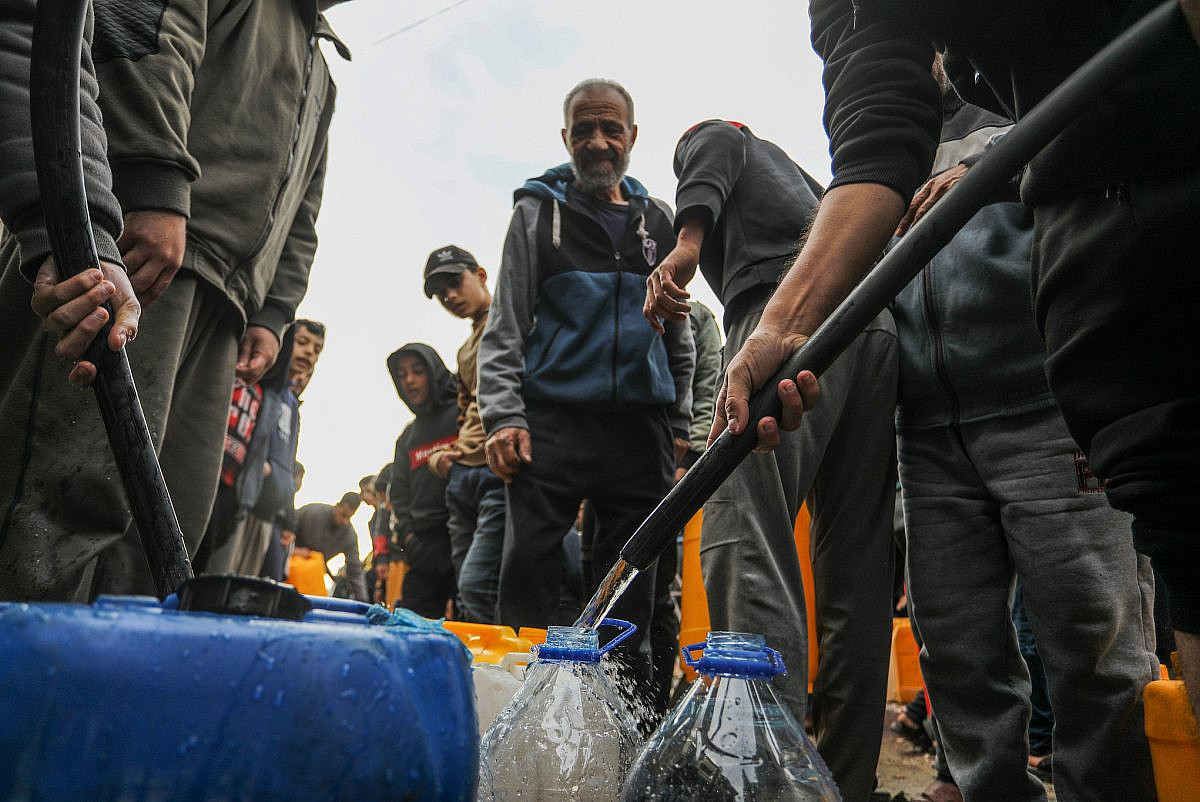In November, only a month into Israel’s assault on Gaza that has now surpassed 100 days, Pedro Arrojo-Agudo, a UN Special Rapporteur on the right to safe drinking water and sanitation, warned that Israel “must stop using water as a weapon of war.” “Every hour that passes with Israel preventing the provision of safe drinking water in the Gaza Strip, in brazen breach of international law, puts Gazans at risk of dying of thirst and diseases related to the lack of safe drinking water,” he implored. The death toll resulting from the lack of water and its impact on public health, Arrojo-Agudo added, could surpass that of the Israeli bombardment itself.
Denying water to Gaza has been a key tactic of the war from the very beginning, with Israel shutting off the pipes supplying the enclave on October 7. Israeli Defense Minister Yoav Gallant announced that Israel was “imposing a complete siege on Gaza. No electricity, no food, no water, no fuel. Everything is closed. We are fighting human animals, and we are acting accordingly.”
The weaponization of water is recognized in South Africa’s accusation — heard last week by the International Court of Justice (ICJ) — that Israel’s assault on Gaza amounts to the crime of genocide. This allegation has also been made by other scholars and human rights figures including Craig Mokhiber, the former director of the New York office of the UN High Commission for Human Rights, in his resignation letter in October.
As South Africa’s petition points out, what has unfolded in Gaza is an intensification of longstanding policies of violence against the Palestinian people. The deprivation of water and the destruction of water and sanitation infrastructure have long been part of the Israeli effort, in both the Gaza Strip and the West Bank, “to make the daily process of living, and dignified living, more difficult for the civilian population,” as a UN Fact Finding Mission stated in 2009.
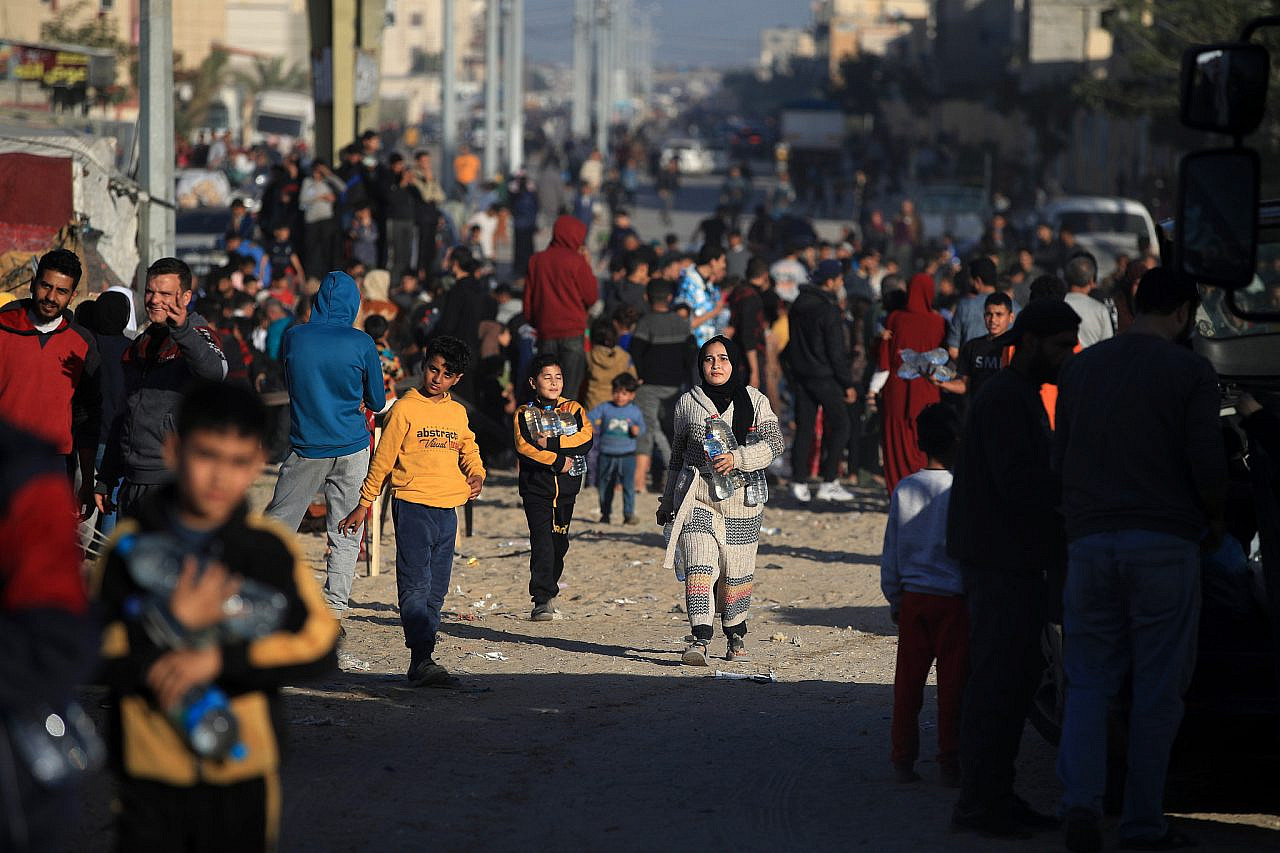
Past Israeli military operations in both of these occupied territories have also led to the destruction of water resources. And for decades, Israel has used water grabbing to dispossess Palestinians of their land and ways of life — impeding Palestinian agriculture in the West Bank and for Palestinians inside Israel. But Israel’s weaponization of water within the framework of its current offensive on the Gaza Strip is on an entirely different scale, with the capacity to cause an unparalleled public health crisis and irreversible ecological damage.
A health and ecological catastrophe
Gaza’s near-total dependence on Israel for water and energy renders it particularly vulnerable to the weaponization of basic resources. About 30% of Gaza’s water supply is typically purchased from Israel, and the rest is reliant on electricity and fuel — the entry of which Israel also controls — for purification.
Since the start of the war, Israel’s tightened siege and bombardment have caused a massive shortage in the water supply. On Oct. 14, the World Health Organization (WHO) stated that the cutting off of electricity meant there was not enough power to operate water wells, desalination and purification plants, and sanitation services. It further reported that strikes had damaged six water wells, three water pumping stations, a water reservoir, and a desalination plant serving over 1.1 million people.
UNICEF, which had opened that desalination plant in 2017, stated that people were forced to drink highly salinated water from the sea, which was further contaminated by vast amounts of untreated wastewater being discharged into the sea every day. Within two weeks of the war starting, OCHA estimated water consumption per person in Gaza — for drinking, cooking and hygiene — at just 3 liters per day, while those cramming into UN shelters had access to only 1 liter per day; International standards recommend at least 15 liters per person each day.
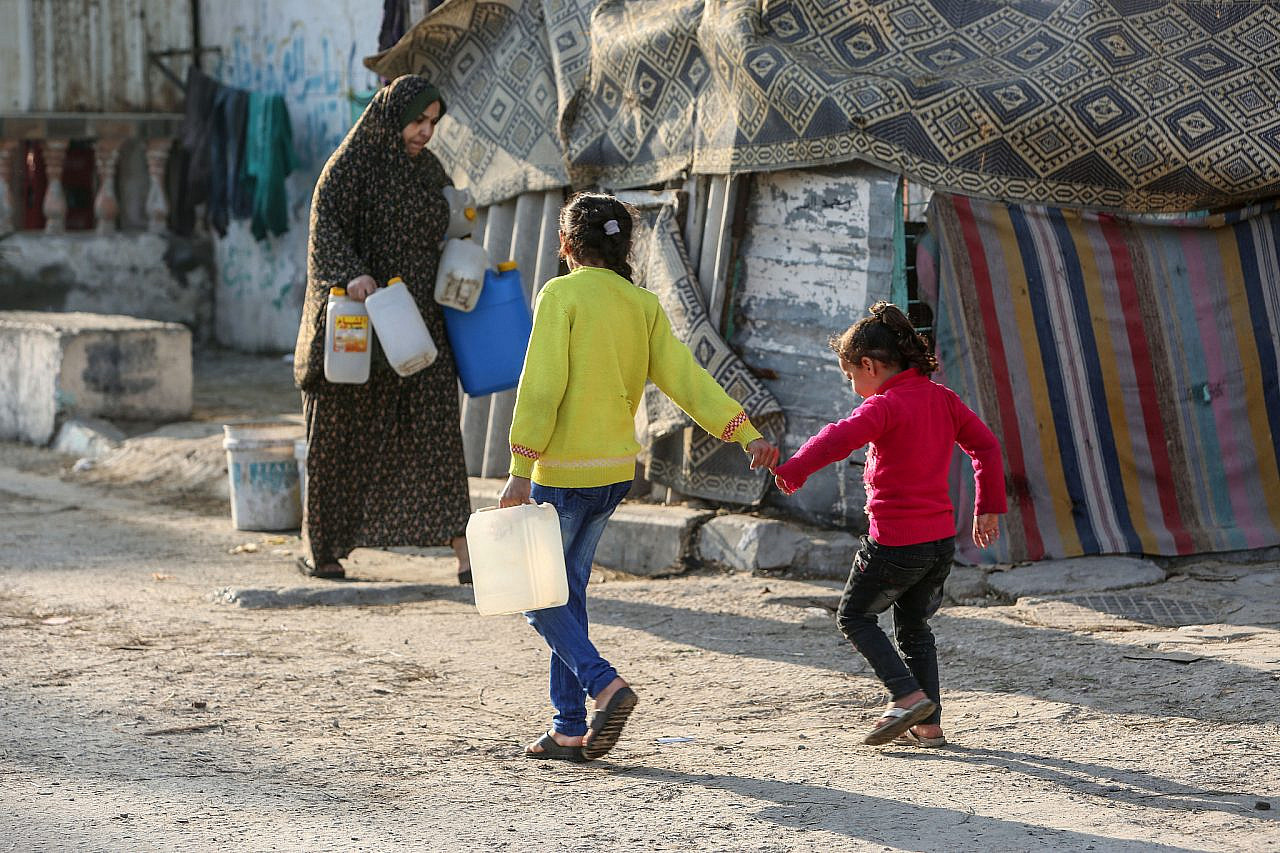
And with bottled water unavailable and large desalination plants not functioning, OCHA wrote: “People have resorted to consuming water extracted from agricultural wells, increasing exposure to pesticides and other chemicals, placing the population at risk of death or infectious disease outbreak.”
Even during the seven-day “humanitarian pause” in hostilities at the end of November, when 200 aid trucks per day — less than half the number that entered daily before the war — were permitted into Gaza, bottles of clean water were still in lamentably short supply. “Despite the pause, there was almost no improvement in the access of residents in the north to water for drinking and domestic purposes, as most of the main water production facilities remained shut, due to the lack of fuel and some also due to damage,” OCHA noted.
The ramifications soon became clear. At the end of October, an internal U.S. State Department report expressed concern that 52,000 pregnant women and over 30,000 babies under the age of six months were being forced to drink a potentially lethal mix of water polluted with sewage and salt from the sea. Since then, Palestinians in the Gaza Strip have been severely weakened by rampant hunger and disease, as well as the physical wounds inflicted on nearly 60,000 people and the mental stress of ceaseless bombardment that has taken more than 23,500 lives. All of this renders Palestinians in Gaza even more vulnerable to water-borne illnesses.
By the end of December, as WHO reported, the more than 1 million displaced Palestinians sheltering in the southern city of Rafah had access to, on average, one toilet for every 486 people, while across Gaza one shower served an average of 4,500 people. Sewage flows through the streets and contaminates the hastily erected tents in which hundreds of thousands of people now live throughout southern and central Gaza. Those who are menstruating face intense hardship, with menstrual products, toilets, and water all in direly short supply.
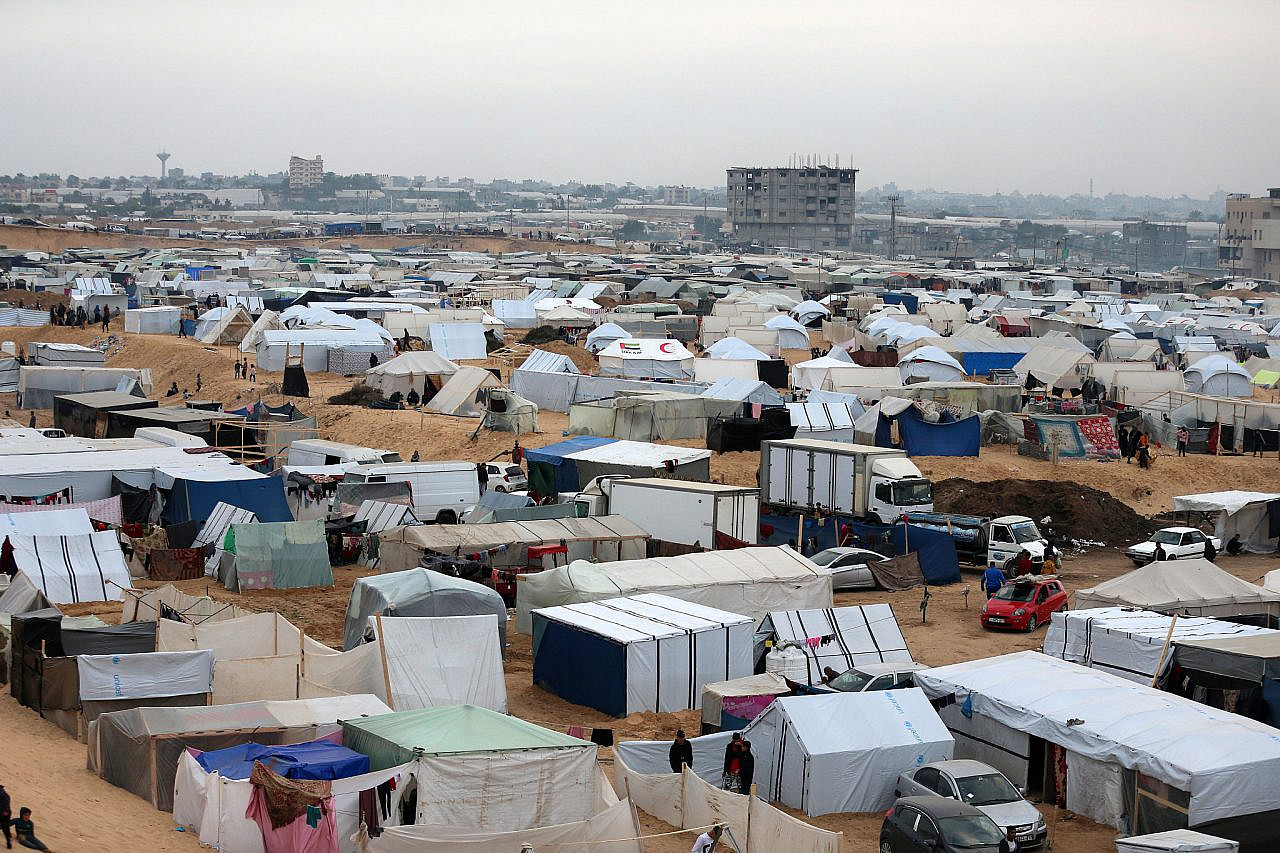
Another disturbing — and potentially long-lasting — tactic that Israel has deployed in recent weeks is pumping sea water into Gaza tunnels. The ostensible goal is to destroy the tunnels and flush out Hamas operatives, but The Wall Street Journal reported that the action could “also threaten Gaza’s water supply.”
Although the extent of the pumping operation remains unclear, South Africa’s submission to the ICJ expresses “extreme concern” about this particular use of water as an offensive weapon, stating: “Environmental experts have warned that the strategy ‘risks causing an ecological catastrophe’ that would leave Gaza with no drinkable water, devastate what little agriculture is possible and ‘ruin the conditions of life of everyone in Gaza.’”
The South African submission also noted that the UN Special Rapporteur for the right to water reportedly compared this Israeli plan to the mythical Roman “salting” of the fields of Carthage, which aimed to prevent the growth of crops and render the territory uninhabitable.
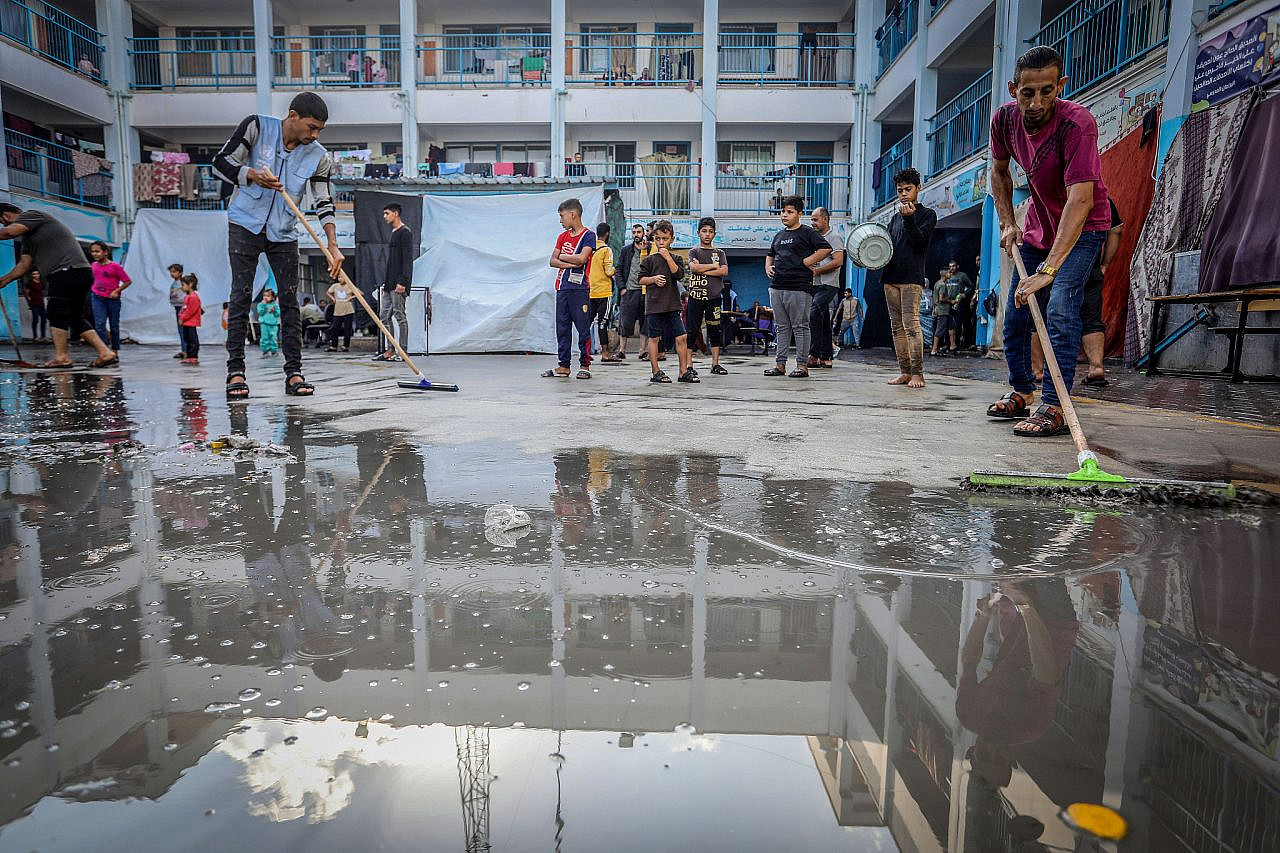
Access to clean water is integral to staving off famine and disease, and with the massive destruction of water infrastructure in Gaza — including drinking supply lines, pumping stations, and wells — a full-blown humanitarian catastrophe is at hand. In the words of the South African petition to the ICJ: “These conditions — deliberately inflicted by Israel — are calculated to bring about the destruction of the Palestinian group in Gaza.” Indeed, public health experts are warning that half a million people — a quarter of Gaza’s population — could die from disease within a year.
Upholding water as a human right
Human rights activists and organizations must unequivocally oppose Israel’s weaponization of water. As activists with the US-based Alliance for Water Justice in Palestine and 1for3.org, we have seen how Israel’s discriminatory water policies have long been used to control Palestinians and drive them from their land. Yet we have also seen how activism around water can mobilize people across many continents to campaign for justice.
Take the example of Aida refugee camp, in the Israeli-occupied West Bank city of Bethlehem, where during some summers water has only flowed through its pipes every two weeks. As in so many parts of the West Bank, people store water in tanks on their roofs. When it runs out, costs skyrocket and indignities pile up, while settlers in sight of the refugees’ homes never experience such water scarcity.
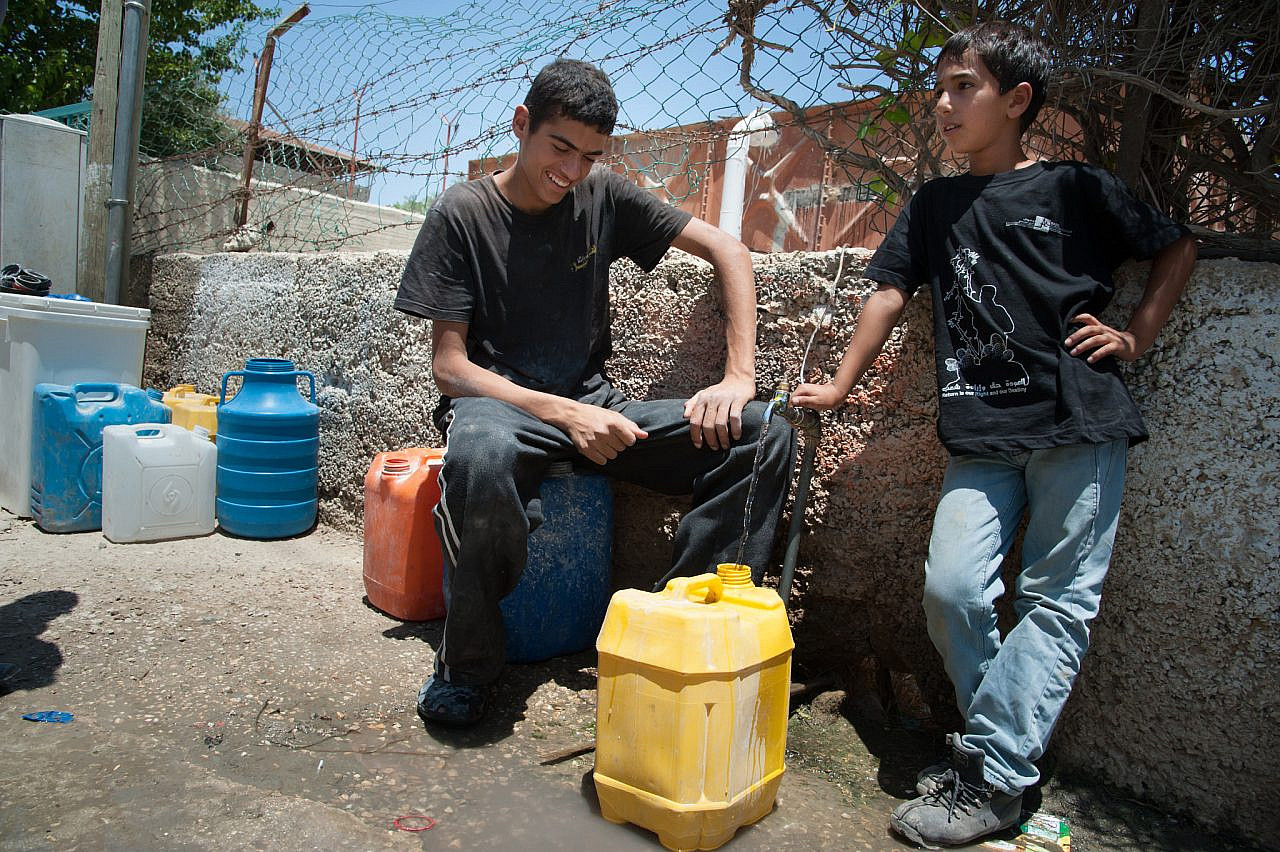
Recognizing this problem on a community level has led to the creation of a community hydroponic garden, heightened awareness about environmental justice, and community initiatives of water testing in which water experts from Boston have participated. Activists in the Boston area have also organized around water justice to stop a water partnership between Massachusetts and Israel.
As the ICJ considers the charges of genocide against Israel, we call on water scholars and activists to consider signing this open letter, which outlines Israel’s discriminatory water policies over the decades and calls for an end to the weaponization of water in the Gaza Strip.
Most read on +972
We recognize that water is but one tool in Israel’s genocidal war, but it is a vital one. Integral to public health and life itself, the human right to water is grounded in the International Covenant on Economic, Social and Cultural Rights. International law is invigorated when people strive together to end Israeli apartheid – including by promoting environmental justice and upholding the human right to water.

